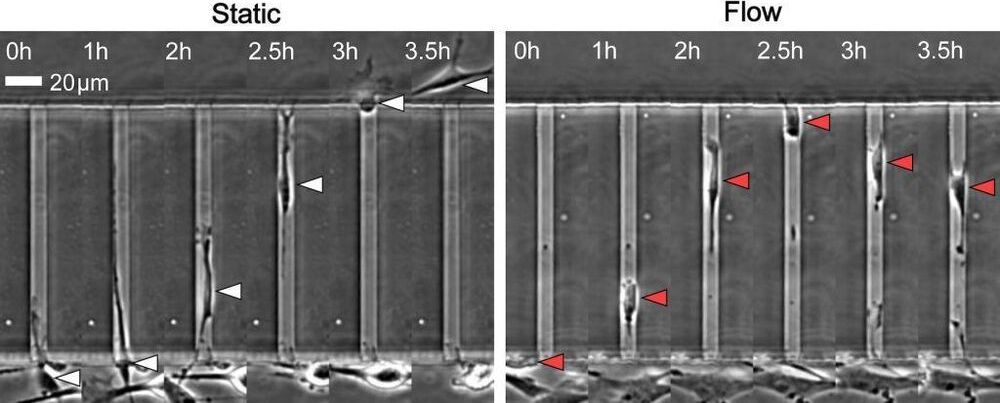“Don’t tread on me” is a slogan of the deep sea, too.



These flaws in AI training give the technology a bad name, and so do regular media reports suggesting that intelligent machines are poised to decimate the human workforce. These themes, for many people, have obscured AI’s genuine usefulness in data analysis and conversational platforms. And while computer vision does indeed have its flaws, it is more than just a reflection of societal biases: it is potentially an essential tool for both society and business.
Computer vision, or CV, gives machines the power of visual recognition in a way that emulates human sight. Whether a machine is detecting dangers on the road or, more controversially, recognising faces in a crowd, the ultimate aim is to make decisions based on image interpretation.
The tech is an advanced form of pattern recognition, made through statistical comparison of data sets. This means that while machines can “see”, they have no real understanding of what they are looking at. They can distinguish one object from another, true, but can’t explain what this difference means.

These themes, for many people, have obscured AI’s genuine usefulness in data analysis and conversational platforms. And while computer vision does indeed have its flaws, it is more than just a reflection of societal biases: it is potentially an essential tool for both society and business.
Computer vision, or CV, gives machines the power of visual recognition in a way that emulates human sight. Whether a machine is detecting dangers on the road or, more controversially, recognising faces in a crowd, the ultimate aim is to make decisions based on image interpretation.
The tech is an advanced form of pattern recognition, made through statistical comparison of data sets. This means that while machines can “see”, they have no real understanding of what they are looking at. They can distinguish one object from another, true, but can’t explain what this difference means.

A stunning new image from the South African MeerKAT telescope captures powerful radio emissions woven through space.
The radio emissions emanate from an enormous rotating black hole that lies at the center of an elliptical galaxy known as IC 4296. Energy released by matter falling into the black hole generates two radio jets of high energy gas on opposite sides of the galaxy — creating what is also known as a double-lobed radio galaxy.

“Once the virus is recognised, the CRISPR enzyme is activated and chops up the virus,” she said.
Paris (AFP)
Scientists have used CRISPR gene-editing technology to successfully block the transmission of the SARS-CoV-2 virus in infected human cells, according to research released Tuesday that could pave the way for Covid-19 treatments.
Writing in the journal Nature Communications, researchers in Australia said the tool was effective against viral transmissions in lab tests, adding that they hoped to begin animal trials soon.

Join the SRIC3 final event big party!
Here’s where you can find the Zoom coordinates to join us celebrating the 2021 Space Renaissance Congress completed:
Though the voting process will remain open until Thursday July 15th, i am happy to announce that **we have elected the new President of Space Renaissance International, Prof. Bernard Foing, and the new Board of Directors!**
Hereafter the received votes so far, that assure we passed the quorum, and the election of our new leadership.
63, 77% of the having right to vote voted so far on the 3 final motions, namely:
Final Resolution: AYE 97, 73%, NAY 0%, ABS 2.27%
Thesis 1 Motion: AYE 93, 18%, NAY 0%, ABS 6.82%

Case in point, a subsidiary of Russia’s Roscosmos space agency is now proposing a nuclear power station on Mars, intended to power a future Russian base on the Red Planet, state-run news agency Sputnik reports.
The Arsenal Design Bureau, the subsidiary, is recommending using the same technologies destined for Zeus, a proposed interplanetary space tug, to power a nuclear reactor on the Martian surface as well.
The massive space tug is designed to make use of a nuclear-powered electric propulsion system to deliver payloads throughout the solar system. Earlier this year, Roscosmos chief Dmitry Rogozin suggested that Zeus could also visit other planets, including Jupiter, to search for alien life. Russia is hoping to begin flight-testing it starting around 2030.

Coronavirus disease-19 caused by the novel RNA betacoronavirus SARS-CoV2 has first emerged in Wuhan, China in December 2019, and since then developed into a worldwide pandemic with 99 million people afflicted and 2.1 million fatal outcomes as of 24th January 2021. SARS-CoV2 targets the lower respiratory tract system leading to pneumonia with fever, cough, and dyspnea. Most patients develop only mild symptoms. However, a certain percentage develop severe symptoms with dyspnea, hypoxia, and lung involvement which can further progress to a critical stage where respiratory support due to respiratory failure is required. Most of the COVID-19 symptoms are related to hyperinflammation as seen in cytokine release syndrome and it is believed that fatalities are due to a COVID-19 related cytokine storm. Treatments with anti-inflammatory or anti-viral drugs are still in clinical trials or could not reduce mortality. This makes it necessary to develop novel anti-inflammatory therapies. Recently, the therapeutic potential of phytocannabinoids, the unique active compounds of the cannabis plant, has been discovered in the area of immunology. Phytocannabinoids are a group of terpenophenolic compounds which biological functions are conveyed by their interactions with the endocannabinoid system in humans. Here, we explore the anti-inflammatory function of cannabinoids in relation to inflammatory events that happen during severe COVID-19 disease, and how cannabinoids might help to prevent the progression from mild to severe disease.

Researchers have identified a specialized protein that appears to help prevent tumor cells from entering the bloodstream and spreading to other parts of the body.
“We have discovered that this protein, TRPM7, senses the pressure of fluid flowing in the circulation and stops the cells from spreading through the vascular system,” said Kaustav Bera, a Image 1: Overexpressing protein TRPM7 in cancer cells greatly reduces entry into the blood vessels. Image 2: In static conditions, cells enter microchannels, whereas 40-60% reverse direction when fluid is flowing. Courtesy of Johns Hopkins University.
Johns Hopkins University news releases are available online, as is information for reporters. To arrange an interview with a Johns Hopkins expert, contact a media representative listed above. Find more Johns Hopkins experts on the Experts Hub, and more Johns Hopkins stories on the Hub.
Bizarre coincidence or fate?
One of the leading developers of rocket technology for the Nazis during World War II appears to have predicted the rise of an “Elon” that would one day rule over human colonies on Mars.
Wernher Magnus Maximilian Freiherr von Braun was an engineer born in Germany shortly before the beginning of the First World War. As a teenager, he became passionate about space flight and ended up working on liquid-fuel rockets for the German army in 1932.
He continued his work on rockets under Nazi German rule, with his team instrumental in creating the V-2 rocket. The rockets – aka Vengeance Weapon Two – would go on to kill thousands of people, though the greatest toll was on the 20000 concentration camp prisoners who died while constructing them under brutal conditions.
During his time developing rockets for Germany, he visited where they were being built, and knew of the awful conditions and deaths of the slave laborers, though he claimed to not know how awful conditions truly were. It’s unclear how enthusiastic he was about working for the Nazis, but he signed up to the party in 1937 (he would later claim it was 1939) and became an SS officer. Before the war was over, he surrendered himself to US forces, and went on to have a long career at NASA, eventually becoming director of NASA’s Marshall Space Flight Center, where he would work on rockets that would take humans to the Moon.